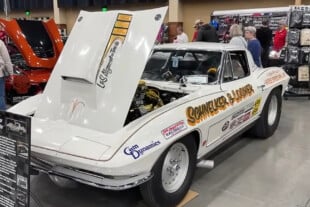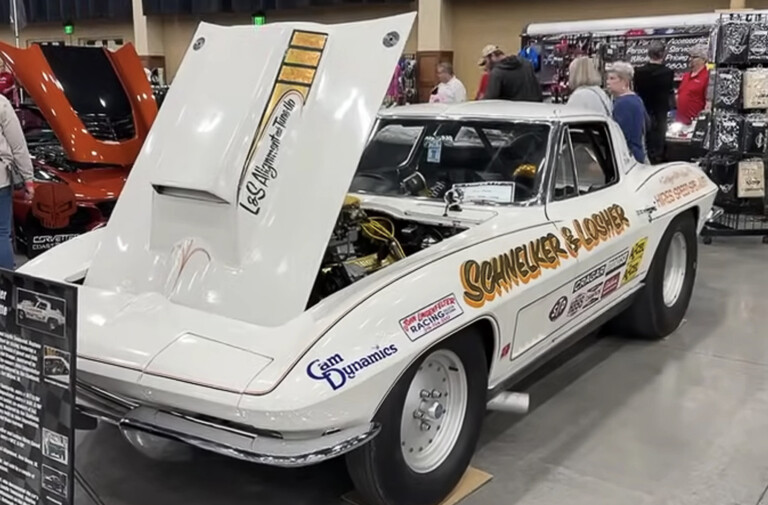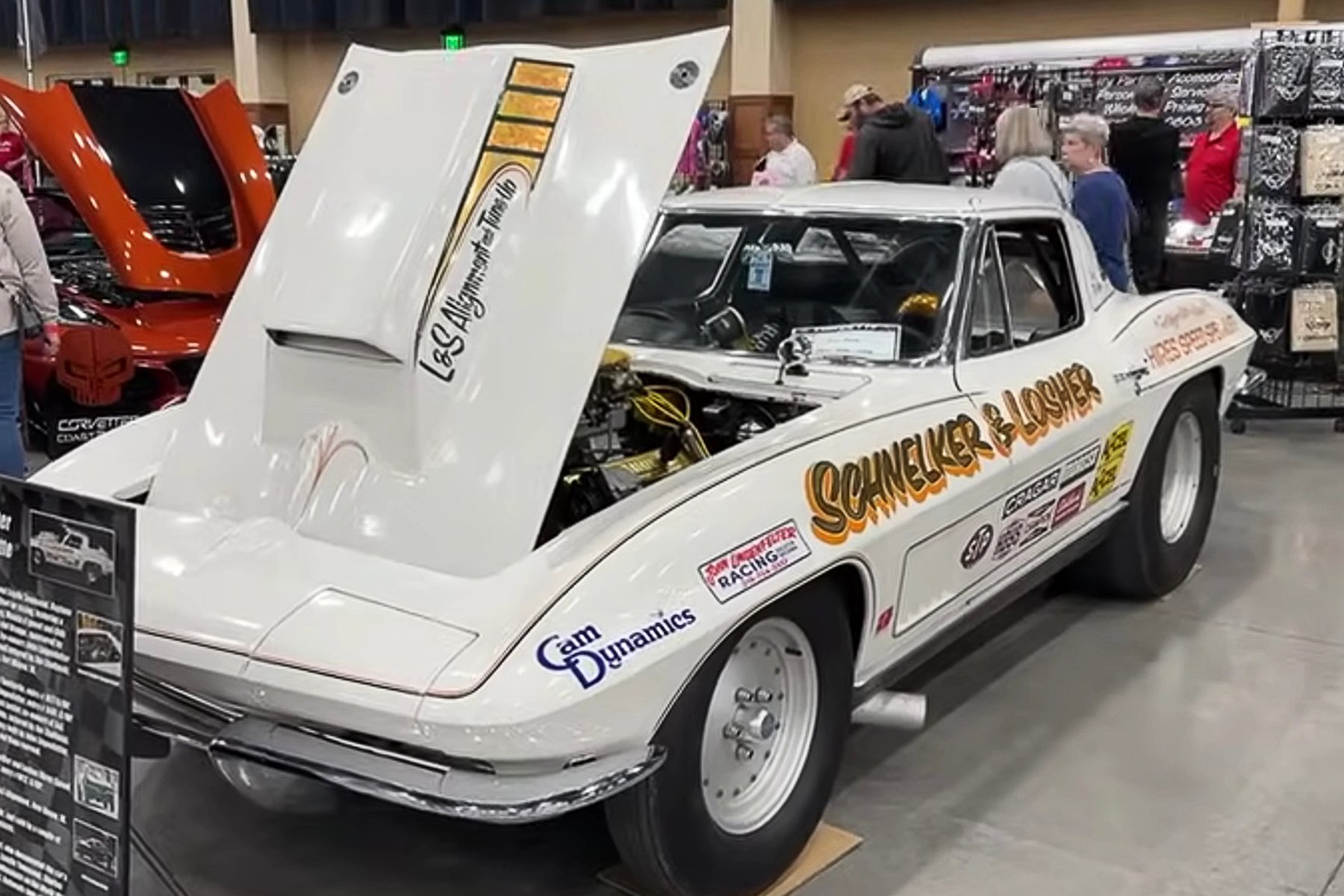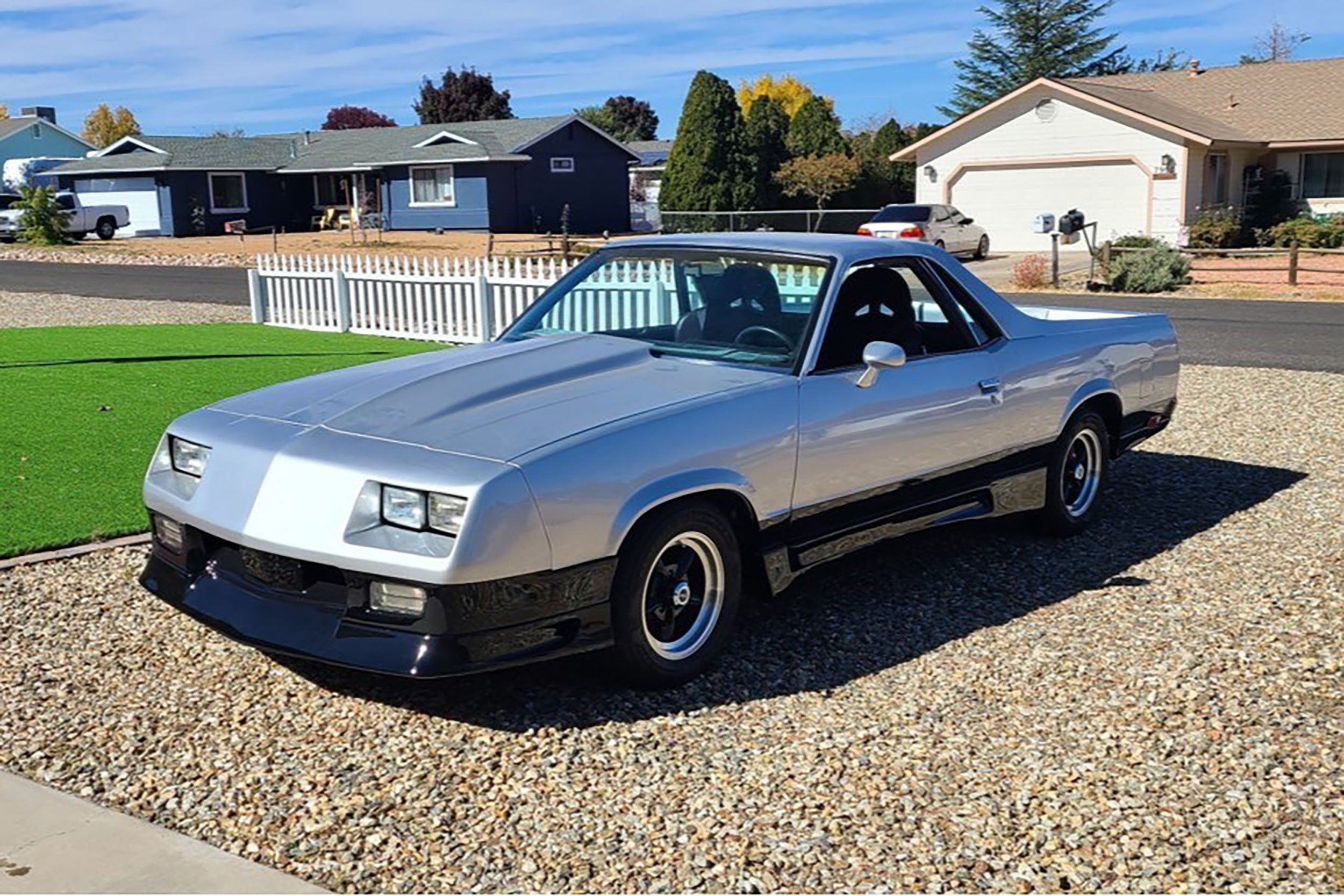 Post-war America saw a newfound interest in stylish sports cars – small, sleek, high-performance two-seaters that domestic automakers simply weren’t offering. GIs returning from Europe after World War II were bringing with them a desire for cars like the Jaguars and MGs that their British counterparts had. Chevrolet saw an opportunity to capitalize on this, introducing the Corvette in a limited production run for 1953.
Post-war America saw a newfound interest in stylish sports cars – small, sleek, high-performance two-seaters that domestic automakers simply weren’t offering. GIs returning from Europe after World War II were bringing with them a desire for cars like the Jaguars and MGs that their British counterparts had. Chevrolet saw an opportunity to capitalize on this, introducing the Corvette in a limited production run for 1953.
While the styling was a hit and the sports car proportions were on point, the first generation Corvette lacked the performance hardware to match those cars from Europe that the market was asking for. It was powered by a 150 horsepower inline six cylinder motor that was hooked to a two-speed Powerglide automatic, resulting in a lethargic sprint to 60 miles per hour from rest in 11.5 seconds.
By the time the '56 models hit Chevrolet showrooms, the Corvette was already starting its transition from a sleek runabout into a serious high performance machine. By then Chevrolet had already ditched the six cylinder engine entirely for the Corvette, and the once-standard two-speed Powerglide was now optional, with a manual three-speed gearbox taking its place as the default transmission. This model year also saw significant updates to the Corvette's bodywork, upping its visual presence to go along with the newfound performance.
With public interest in the model already waning by 1954, Chevrolet briefly considered shelving the Corvette project altogether. But a trifecta of factors would dramatically change the Corvette’s trajectory that year: The introduction of Chevrolet’s new 265 cubic inch V8, the additional competition brought on by the debut of the 1955 Ford Thunderbird, and the involvement of GM engineer and performance enthusiast Zora Arkus-Duntov on the Corvette project.
In just two years the Corvette was comprehensively transformed, from the body work and build quality to the handling, braking and straight line performance. But it was the introduction of the new 283ci V8 with its optional Rochester fuel injection system that would solidify the Corvette as a world class sports car in 1957.

Ed Cole, the newly promoted manager of Chevrolet, wanted to make a big impression with his first model year at the helm. Part of that strategy included this fuel injection system, which was initially offered on all Chevrolet passenger cars in 1957 and 1958. For the 283ci V8 offered in the Corvette, it resulted in an output of 290 horsepower, though it was officially rated at 283 hp to capitalize on the marketing potential of one-hp-per-cubic inch, an impressive figure at the time.
Underrated at 283 horsepower for marketing purposes, the new “Fuelie” 283 V8 produced more than one horsepower per cubic inch, one of the first mass-produced engines to do so.
Duntov, an avid racer, also pushed to greatly improve the Corvette’s road course prowess as well, getting heavy duty suspension, wider wheels and tires, and a big brake kit onto the car’s options sheet as well. The result was what’s now known as the ’57 Fuelie, the model that put Corvette in league with the best that Europe had to offer.
Duntov didn't just want to turn the Corvette into a competent street machine - he wanted to race. Accordingly, a number of high performance options were available to supplement the standard equipment, like the RPO 684, which specified wider wheels, high performance springs and shocks, quick ratio steering, uprated brake linings, vented brake plates and numerous revised components. Only 51 1957 Corvettes were built with the RPO 684 option. Images: Mecum
Creating A Sports Car
Although the 1957 model year was pivotal for the Corvette, its makeover from a sedate cruiser into a serious sports car had already begun the year prior. 1956 saw major revisions for the Corvette’s bodywork that gave it a more athletic appearance, which was coupled with a standard V8 power plant and a three-speed manual transmission, while the two-speed Powerglide remained on the options sheet.
Additionally, many of the early quality control issues that had plagued previous Corvette models had been addressed by this point, and the number of optional features – both luxury and performance – swelled that year.
For 1957, the Corvette's V8 got a displacement bump from 265 cubic inches to 283. This meant an output increase for all the different iterations of the Corvette's power plant that year, with the Ram-Jet fuel injection equipped, high-compression, solid lifter version of the V8 officially offering 283 horsepower. Images: Mecum
Around that same time, GM engineer Ed Cole was promoted to general manager of the Chevrolet division, and he wanted 1957 to be a banner year for the brand. Duntov, who had already made a name for himself within GM when he set records at Pikes Peak in a modified ’56 Chevy, had been infatuated with the Corvette ever since he’d seen the Motorama Corvette debut in 1953 and was already at the helm of Chevrolet’s high performance efforts by this time. Cole assigned Duntov to oversee the development of a fuel injection system that would be optional on all ’57 model year Chevrolet passenger cars.
Fuel injection was a fairly exotic technology at the time, but GM’s Rochester division had a strong asset its development with engineer John Dolza, who understood the complexities of system. “John Dolza is a splendid man, brilliant and clear thinking,” Duntov once remarked. “I can spare no words to say how powerful this man is intellectually.” But the team suffered a serious setback in April of 1956 when Duntov suffered a broken back as a result of a crash during testing.
A three-speed manual transmission was standard by 1957, replacing the two-speed Powerglide automatic, which became an option. While the new top-spec 283ci motor played a major role in the Corvette's impressive performance, the four-speed manual gearbox, which became available mid-year in 1957, played an equally important role, and allowed the Corvette to be equipped with more aggressive final drive ratios. Images: Mecum
Yet after just a few months of recuperation Duntov returned to the fold, and by the time the ’57 model year Chevrolet vehicles were ready for showrooms, all passenger cars were available with GM’s new Ram-Jet fuel injection system. For the Corvette, than meant one horsepower per cubic inch with its new 283ci V8 motor. Coupled with a four-speed manual transmission that became a mid-year option in 1957, the Corvette now had the firepower to take on the competition from Europe.
The Fuelie Motor
Although it was plagued with early reliability problems upon its debut, the performance that the fuel injected 283ci V8 offered was undeniable. Installed in the Corvette it made Chevrolet’s sports car the quickest production automobile in the world at the time. In that configuration the motor produced 290 horsepower, though GM listed its official output as 283 horsepower in order to capitalize on the notion of “One Horsepower Per Cubic Inch”, an impressive feat of engineering in its day.

Considering its rushed development timeframe and the then-exotic technology required to make it work, it comes as little surprise that early versions of the Ram-Jet fuel injection system suffered from reliability issues. Still, when properly tuned, it helped the Corvette outclass the best that Europe had to offer. Image: Mecum
And the motor delivered on its performance promise. Along with the massive mechanical advantage offered by the optional four-speed gearbox and performance-focused gear ratios available in Chevrolet’s new Positraction limited slip differential, Road & Track clocked an astounding 5.7 second sprint to 60 mph on the way to a 14.3 second quarter mile time, solidifying the Corvette’s place in the high performance food chain.
Still, a $500 premium over its carbureted counterpart and a reputation for finicky behavior made the top-spec fuelie Corvette a rare model in 1957, with only 240 examples produced among the more than 6,300 Corvettes that were built that year. After 1958 the Ram-Jet fuel injection system would be dropped from the options sheet for the rest of the Chevrolet passenger car line, though it would continue to be available on Corvettes through 1965.
A Pivotal Moment In Corvette History
Although more potent Corvettes would soon roll out of Chevrolet’s factories, the ’57 model year, and the Ram-Jet equipped 283ci V8 models specifically, proved to be a watershed moment in the sports car’s evolution, effectively transitioning the model out of the “all show and no go” camp into the realm of world class sports cars.

In just four model years, the Corvette had become an entirely different beast. While the original cars certainly turned heads, their performance just wasn’t up to par with the sports cars available elsewhere. 1957 proved to be a turning point in the Corvette’s history, placing its performance among the best the world had to offer, and blending it with timeless style to boot. Image: Mecum
For that reason, and bolstered by the fact that relatively few were originally produced, original ’57 Fuelie Corvettes command six-digit prices in the collector car market – when they’re available.
1958 would bring with it more aesthetic changes for the Corvette, including a new fixed-position four headlight setup that would stay with the C1 until the C2 would replace it for 1963, while the car’s performance capability would remain more or less unchanged until the second generation model made its debut.




























